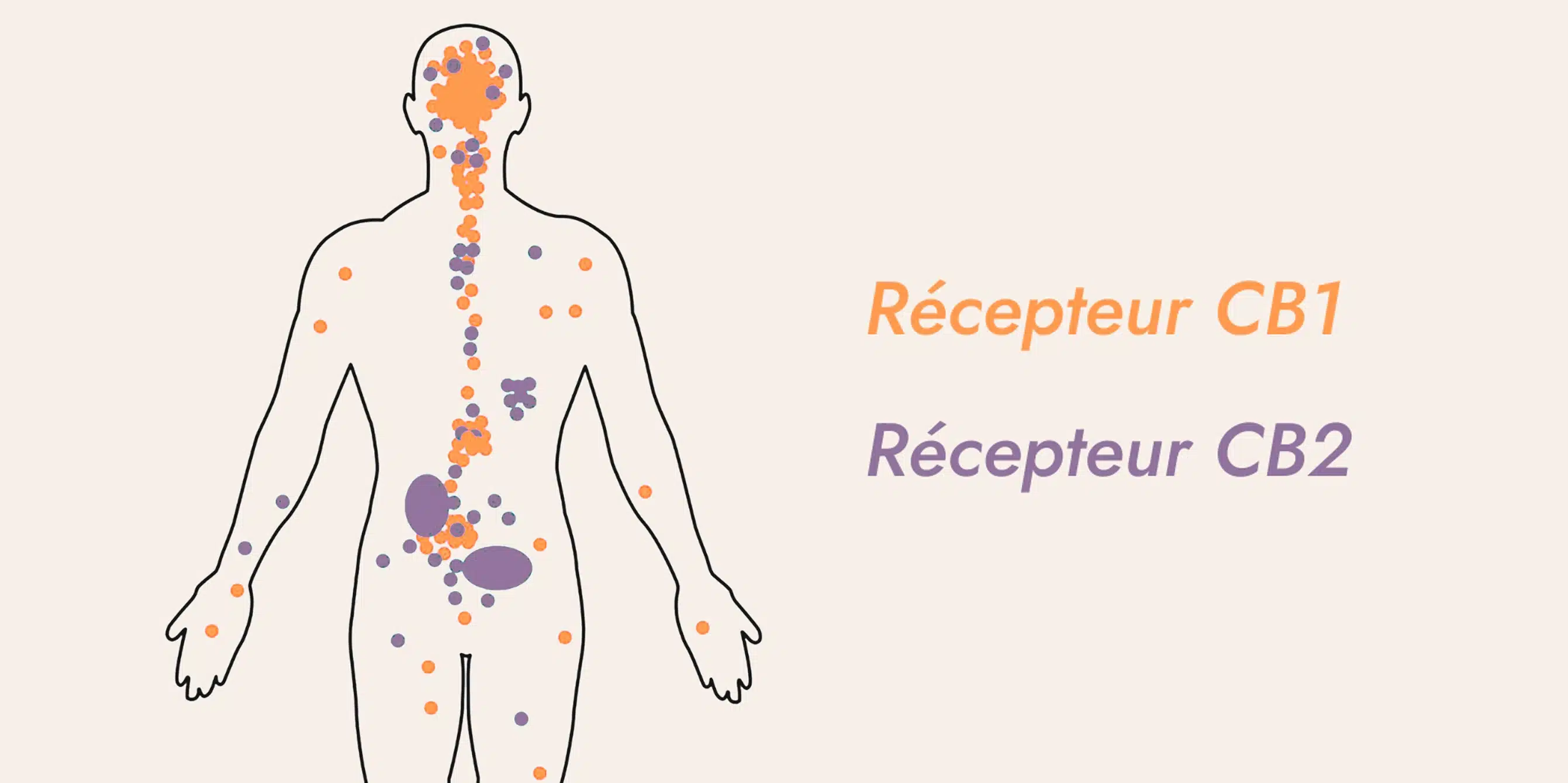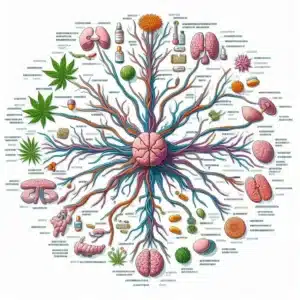how does the endocannabinoid system work?

The endocannabinoid system (ECS): what is it? How do CBD and THC interact with our bodies? In this guide, we explore this relatively recent scientific discovery and reveal the fundamental role of the ECS and its mechanism of action in the human body.
The discovery of the endocannabinoid system
The endocannabinoid system was discovered during research into Cannabis sativa's main psychoactive compound, delta-9-tetrahydrocannabinol (THC). In their quest to understand how this molecule affects the human body, researchers identified specific receptors on the surface of cells, specially designed to interact with cannabinoids.
To simplify, imagine the endocannabinoid system as a set of locks and keys. Receptors are the "locks" and can only be activated by the appropriate "keys", which are actually molecules called ligands. When a ligand binds to a receptor, it triggers a specific biological reaction, paving the way for a series of signals in the body.
In 1988, the first cannabinoid receptor, called CB1, was discovered. This receptor is primarily responsible for THC's euphoric effects. This discovery prompted scientists to explore whether the human body produced its own cannabinoid-like molecules. This led to the identification of ligands naturally produced by the body, known as endocannabinoids. This term was used to describe these endogenous molecules, paving the way for a new understanding of the interactions between cannabinoids and the human body.
Where are CB1 and CB2 receptors located in the body?
The endocannabinoid system is mainly located in the central nervous system, but its receptors are also found in many peripheral tissues such as the liver, lungs, skin and muscles. CB1 and CB2 receptors are thus present in almost every cell of the body.
However, their distribution differs according to their type. CB1 receptors are mainly concentrated in the brain, particularly in the central nervous system and peripheral nerve endings. CB2 receptors, on the other hand, are mainly present in the immune system, notably in the spleen. They are also linked to the soothing effects of CBD, playing a role in inflammatory response and pain management.
What is the purpose of the endocannabinoid system?
The endocannabinoid system performs many complex functions within the body. It acts as a regulator of homeostasis, helping to maintain the body's internal equilibrium. It influences various physiological processes such as weight regulation, blood sugar management, heart rate and body temperature. Its pro-homeostatic role is essential for the body to function properly and adapt to external changes.

What is the endocannabinoid system?
The endocannabinoid system is a complex network of receptors and messenger molecules, called endocannabinoids, which regulate many physiological functions such as :
- Sleep: Promoting relaxation and regeneration.
- Appetite: By stimulating the sensation of hunger.
- Pain: By inhibiting the transmission of pain signals.
- Mood: By regulating the production of neurotransmitters such as serotonin and dopamine.
- Memory: by influencing the formation and retrieval of memories.
How can the endocannabinoid system be stimulated?
- Omega-3 fatty acids:
They include fatty fish, nuts, and are found in seeds and are essential for the production of endocannabinoids. - Antioxidants:
found in coloured fruits and vegetables, they protect endocannabinoids from degradation.
- A activity physics regular stimulates the production of endocannabinoids, favoring the well-being and reducing the stress.
- Sleep : Good sleep is important for regulating endocannabinoid levels using
our cbd and cbn oil can enable to body to itself repair itself. - Management of stress : techniques from relaxation such that the meditation, the yoga and the breathing deep can help à reduce the stress and à promote
- Plants: Some plants, like hemp, contain compounds (cannabinoids) that interact with endocannabinoid receptors.


The benefits of a balanced endocannabinoid system
A well-functioning endocannabinoid system can contribute to :
- Reduce pain and inflammation, especially with our cbd-based gels
- Improve sleep quality
- Reduce stress and anxiety
- Mood booster
- Improve cognitive functions
Why do the effects of cannabis vary from person to person?
When you use cannabis, you introduce external cannabinoids that interact with your endocannabinoid system, complementing those your body produces naturally. These interactions alter the way your body functions, but the response varies from one individual to another. Each person has a unique configuration of endocannabinoid receptors, both in terms of quantity and location in the body. This biological variability makes reactions unpredictable and different for each individual.
Other factors, such as the type of cannabinoids consumed, dose, physical and mental state, and method of administration, also influence the effects experienced. For this reason, it's advisable to consult a healthcare professional before starting CBD treatment or other cannabis-based products.
Conclusion
The endocannabinoid system is key to our well-being.
By adopting a healthy, balanced lifestyle, we can promote its proper functioning and thus improve our quality of life.






